Running an ultramarathon isn’t just a longer version of a marathon, it’s a completely different challenge. Distances of 50K, 100K, 100 miles, or even multi-day stage races push your body, mind, and gear to their limits. Having the right equipment isn’t optional; it’s a survival strategy; it’s the difference between failure and success. In this ultramarathon survival guide, I’ll break down everything you need for an ultramarathon, from mandatory race kit to the optional items that can save your race.
Footwear: Your Foundation
Your shoes will take the biggest beating during an ultra, so choose wisely.
Trail Running Shoes (for trail ultras) – Look for grip, durability, and a comfortable fit for swelling feet. Popular choices: Hoka Speedgoat, Altra Lone Peak, Salomon S/Lab Ultra.
Road Shoes (for road ultras) – Go for cushioning and long-distance comfort. Hoka Clifton 10s, New Balance fresh foam and Saucony Endorphins are some of my favourites.
Take an Extra Pair – In 100-mile races especially, having a second pair can be a lifesaver if the first gets soaked or destroyed.
Gaiters – Keep dirt and debris out of your shoes on rugged trails.
Socks – Moisture-wicking, blister-resistant socks (Injinji, inov8, Drymax or Compressport are what I use). Pack several pairs for drop bags.
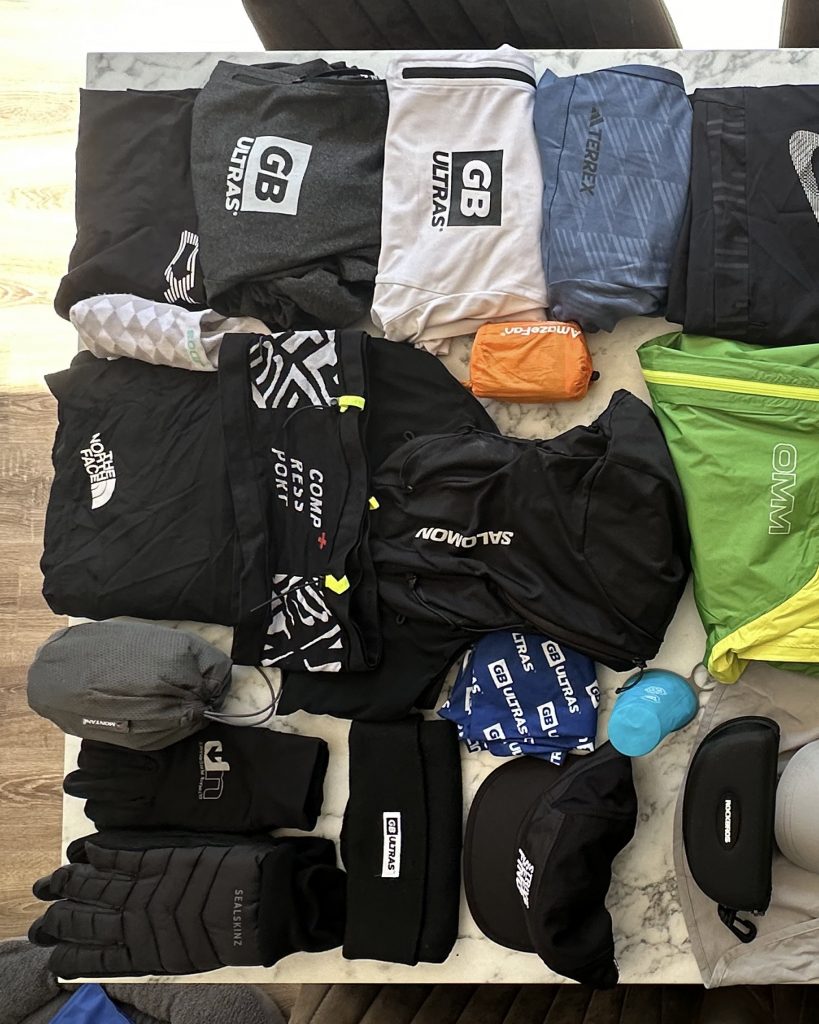
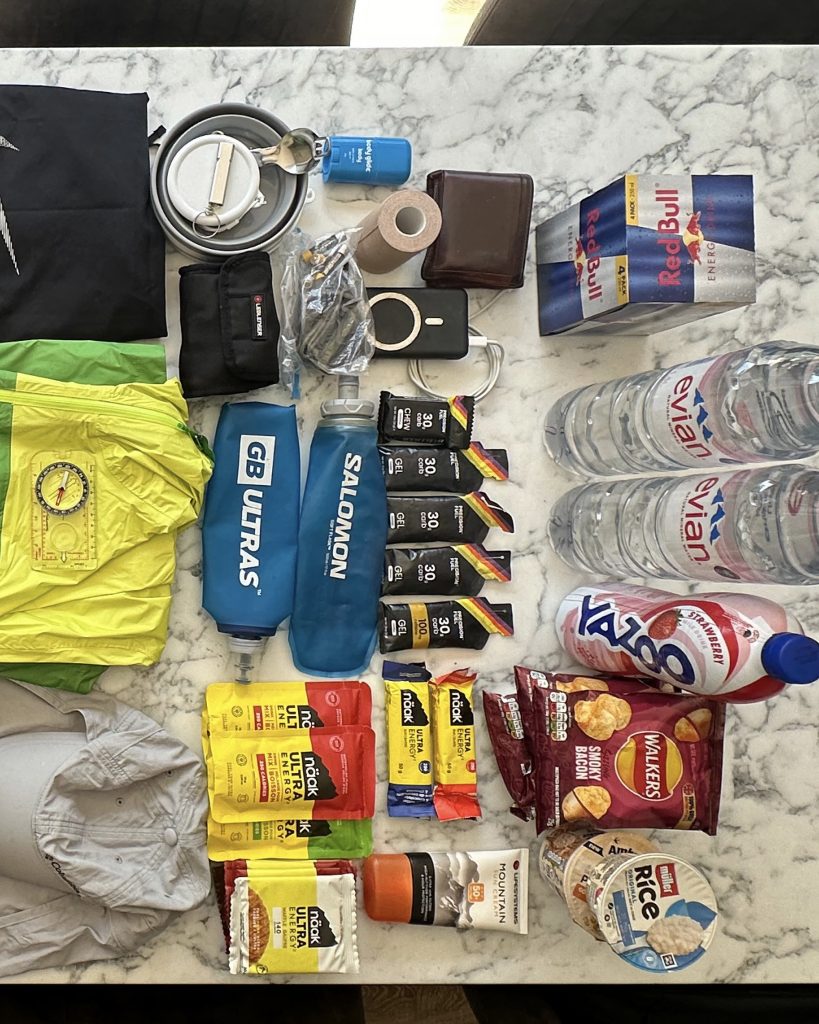
Hydration System: Stay Ahead of Dehydration
You’ll be out there for hours, sometimes days, so hydration is critical.
Hydration Vest or Pack – A must for carrying fluids, nutrition, and gear. Look for 5–12L capacity for most races. The Salomon adv skin 12 is perfect for mandatory kit.
Soft Flasks – Easy to refill and collapse as you drink.
Bladder (1.5–2L) – Great for long stretches without aid stations, but a fiddle to fill up at checkpoints and aid stations.
Electrolyte Mix & Tablets – Replaces salts lost through sweat and prevents cramping.
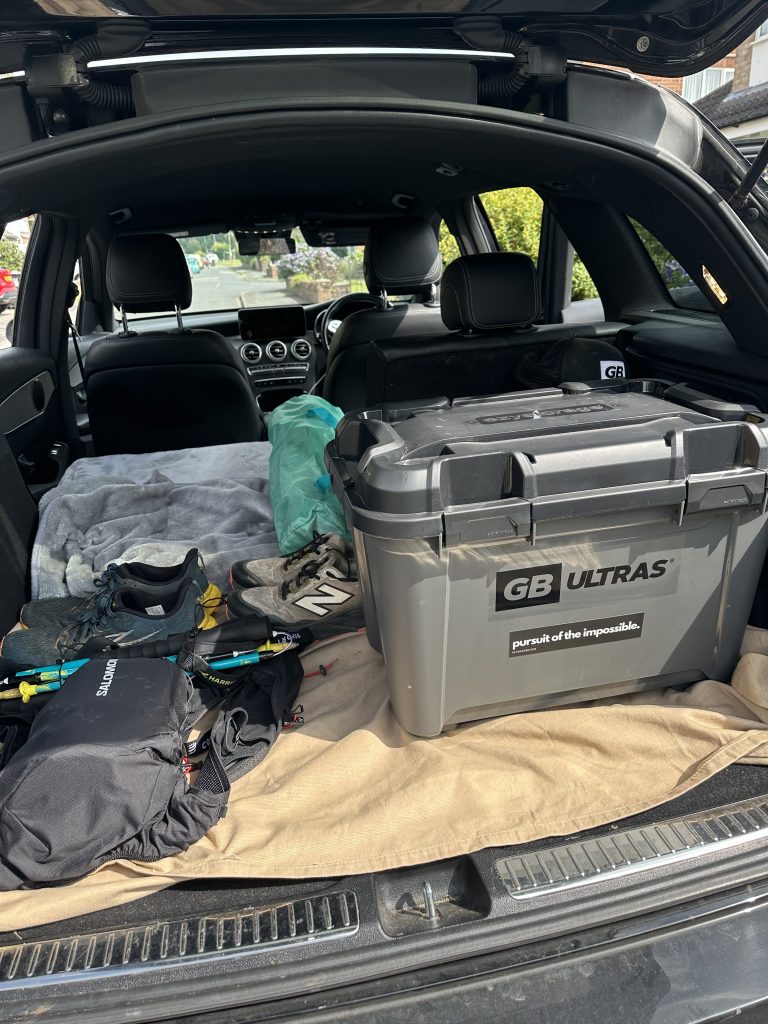
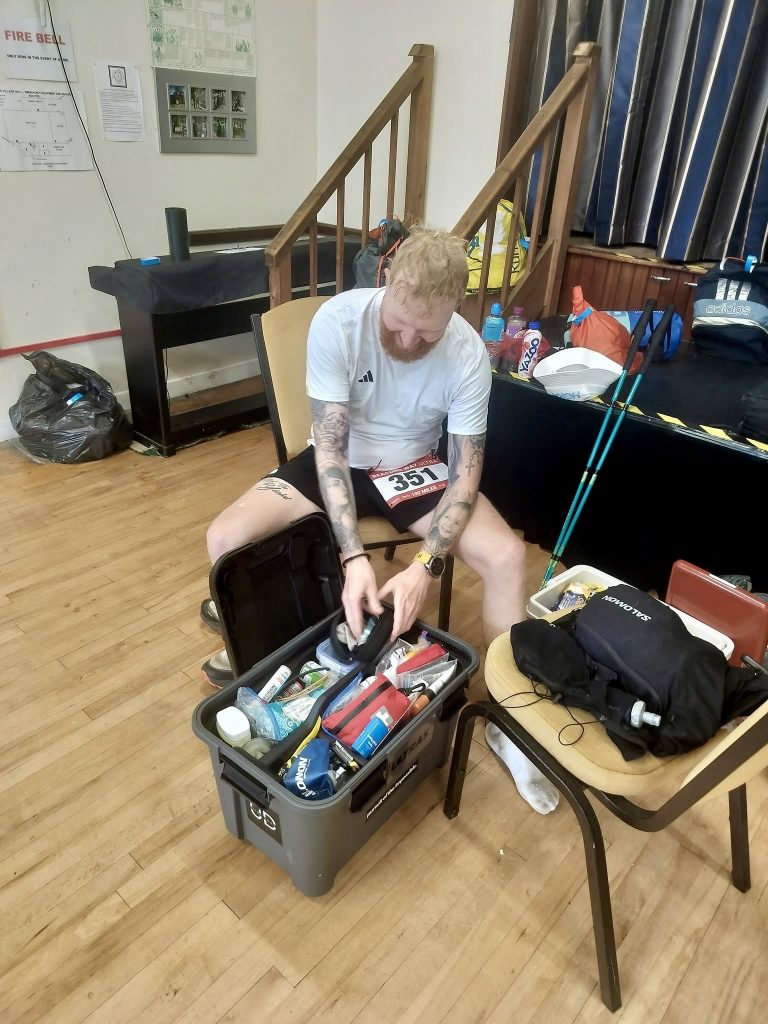
Nutrition: Fuel Your Engine
Your body will burn thousands of calories during an ultra. Relying on aid stations isn’t enough.
Energy Gels & Chews – Fast carbs for quick energy, but can get revolting after a few hours on your feet.
Real Food – Sandwiches, boiled potatoes, crisps, or whatever sits well for you. I crave savoury foods in a race and liquid calories later in a race. Milk shake and protein shakes work well for me.
Salt Tabs or Electrolyte Caps – Prevent hyponatremia and muscle cramping.
Reusable Food Bags – Keep snacks accessible in your vest pockets.
Clothing: Comfort and Protection
The wrong clothing can turn a great day into a DNF (Did Not Finish).
Moisture-Wicking Shirt & Shorts – Avoid cotton at all costs.
Compression Gear (optional) – Helps with muscle support and circulation.
Hat or Buff – Protect from sun or retain heat in cooler temps.
Lightweight Rain Jacket – Mandatory for most ultras, especially in mountains.
Gloves & Thermal Layer – For cold starts or high-altitude sections.
Lighting: See and Be Seen
If your race goes overnight, lighting is non-negotiable.
Headlamp – A strong, rechargeable headlamp with 300+ lumens (Petzl Nao, Black Diamond Spot and Ledlenser MH10 are a few I’ve used).
Backup Headlamp – Races often require a spare.
Extra Batteries – Or a portable USB power bank.
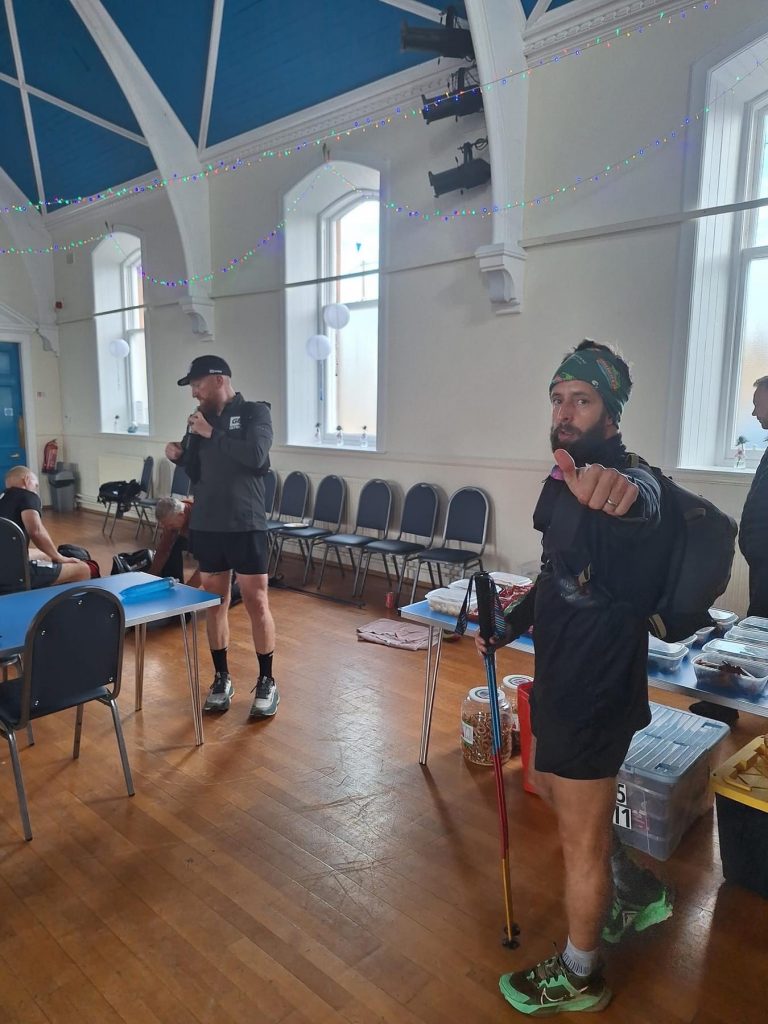
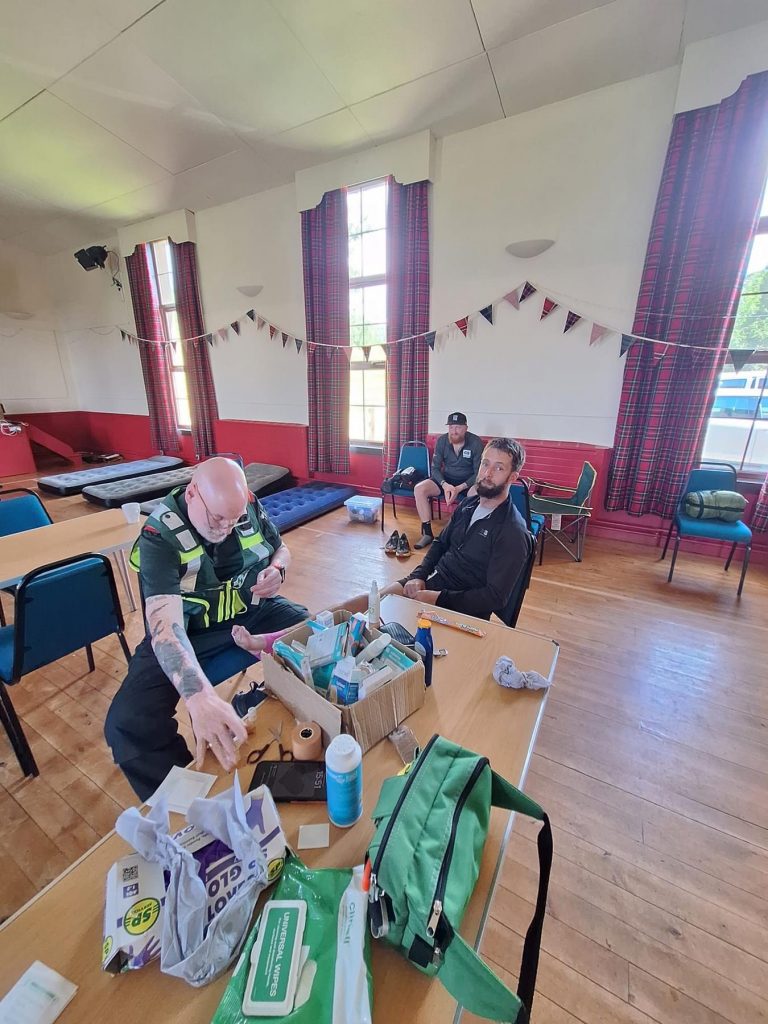
The Usual Mandatory Safety Gear
Many ultras, especially in remote areas, require:
Emergency Blanket or Bivi bag – For warmth if you get stranded.
Whistle – For signalling in case of emergency.
First Aid Kit – Band-aids, blister care, pain killers.
Mobile Phone or GPS Device – For navigation and safety.
Map & Compass (if required) – Some races mandate this.
Drop Bag Essentials
If your race offers drop bags, use them wisely.
Extra Shoes & Socks
Fresh Clothes (shirt, shorts)
Spare Nutrition
Battery Pack & Charging Cable
Anti-Chafing Cream (and lots of it)
Small Towel & Wet Wipes
Tooth Brush & Tooth Paste
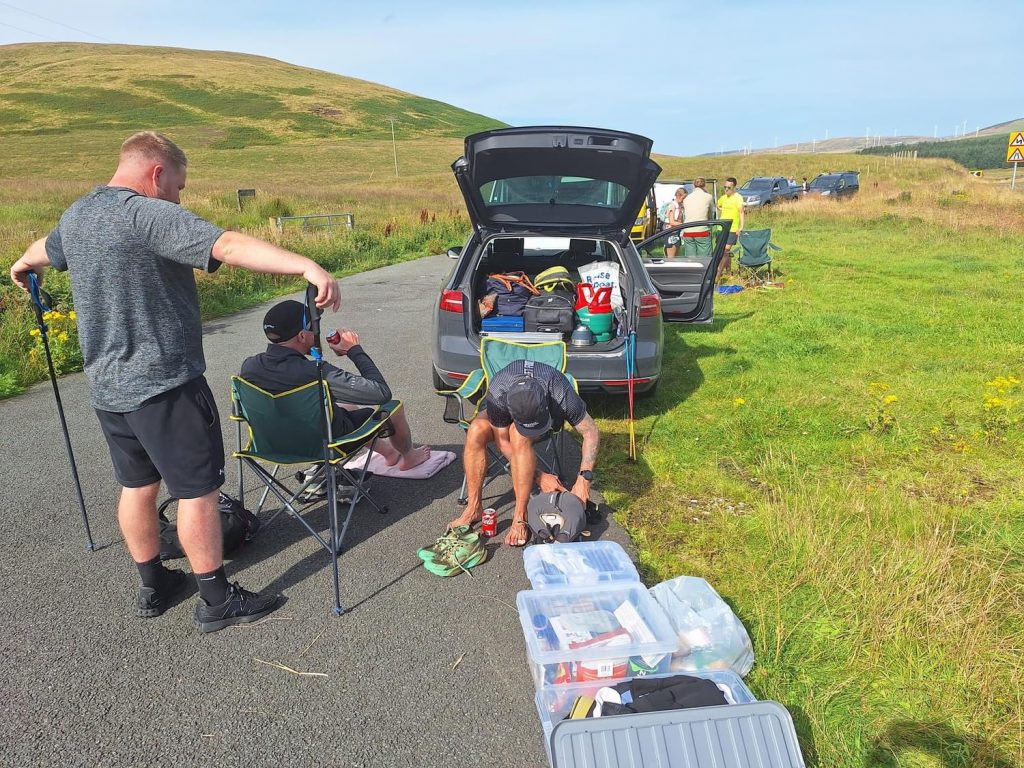
Recovery & Post-Race Gear
You’ll thank yourself later for packing:
Flip Flops or Sandals
Comfy Clothes
Foam Roller or Massage Gun
Protein Shake or Recovery Snacks
My Tips for Race Day
Test Everything in Training: Never try new gear on race day.
Label Your Drop Bags Clearly: Make them easy to spot in the chaos.
Weather-Proof Your Strategy: Mountain ultras can swing from sun to snow.
Create an Eating Strategy: Eat little and often at timed intervals, even if you are not hungry.
Take Care of Your Feet: At every aid station, check for hot spots and change socks if needed—blisters can end a race quicker than fatigue.
Set Small Goals: Break the race into manageable sections and celebrate finishing each one.
Don’t Forget Sunscreen and Lip Balm: Long hours exposed to the elements can be brutal—protect your skin and lips.
Smile at the Aid Stations: A positive attitude is contagious, and kind words from volunteers can lift your spirits when you need it most.
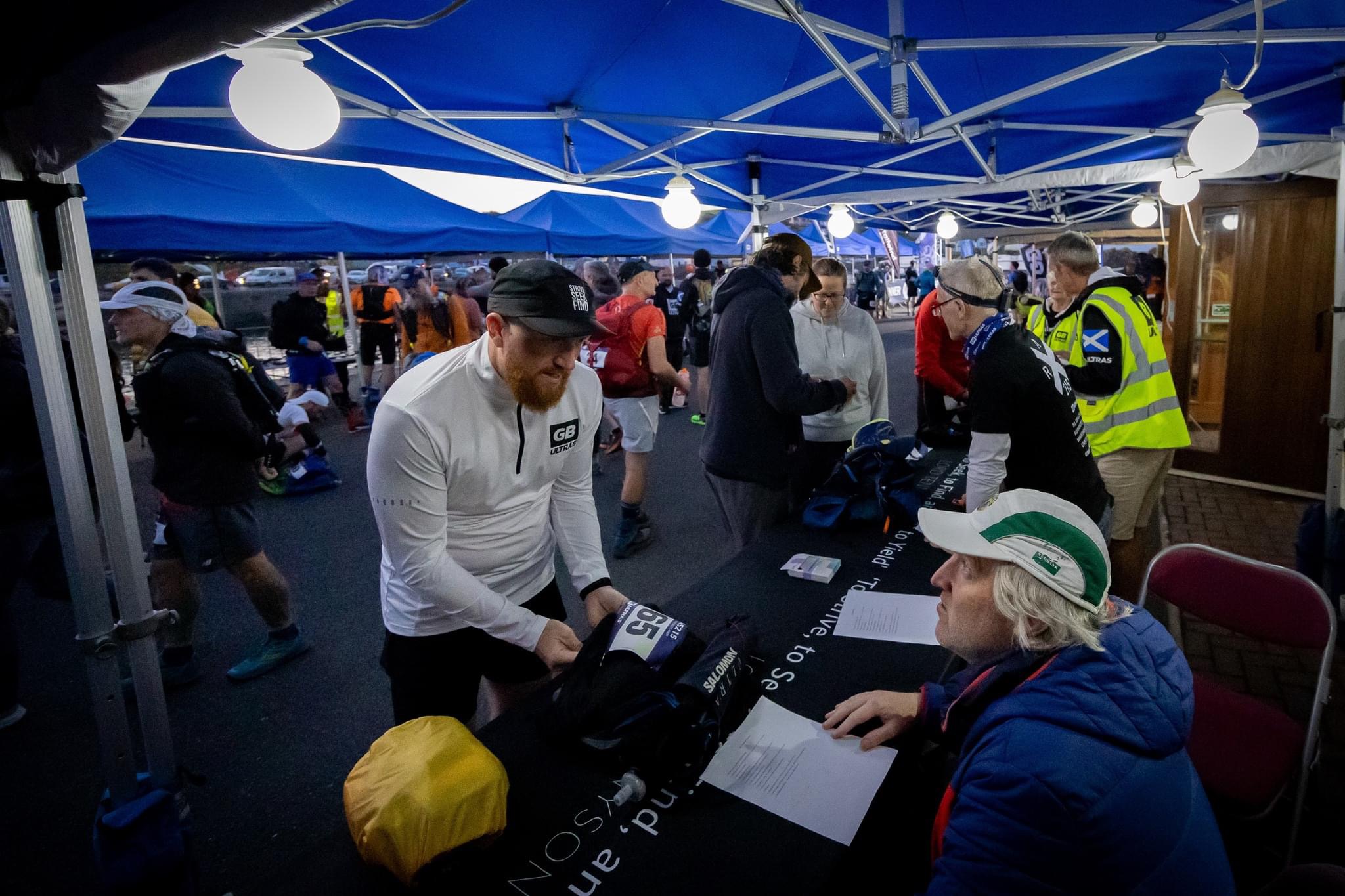
Ultramarathons are about preparation as much as endurance. The right gear won’t make the race easy, but it will make the impossible feel achievable. Start gathering your kit early, train with it, and make sure everything has been tested before race day.


Leave a Reply